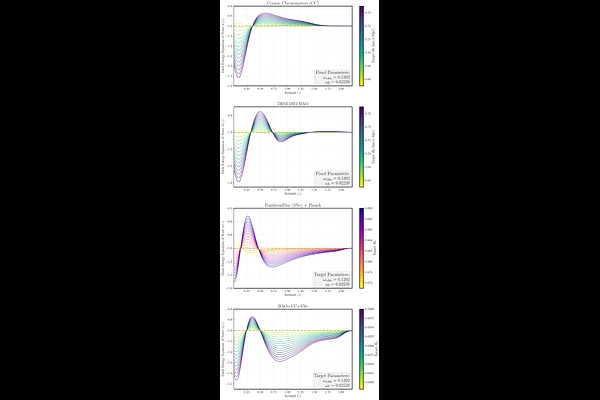What Prevents Resolving the Hubble Tension through Late-Time Expansion Modifications?

What Prevents Resolving the Hubble Tension through Late-Time Expansion Modifications?
Zhihuan Zhou, Zhuang Miao, Sheng Bi, Chaoqian Ai, Hongchao Zhang
AbstractWe demonstrate that Type Ia supernovae (SNe Ia) observations impose the critical constraint for resolving the Hubble tension through late-time expansion modifications. Applying the Fisher-bias optimization framework to cosmic chronometers (CC), baryon acoustic oscillations (BAO) from DESI DR2, Planck CMB, and Pantheon+ data, we find that: (i) deformations in $H(z \lesssim 3)$ (via $w(z)$ reconstruction) can reconcile tensions between CC, Planck, DESI BAO, and SH0ES measurements while maintaining or improving fit quality ($\Delta\chi^2 < 0$ relative to $\Lambda$CDM); (ii) In the neighborhood of Planck best-fit $\Lambda$CDM model, no cosmologically viable solutions targeting $H_0 \gtrsim 69$ satisfy SNe Ia constraints. MCMC validation confirms the maximum achievable $H_0 = 69.09\pm0.30$ ($\chi^2_{\rm BF} \approx \chi^2_{\Lambda\rm CDM}$) across all data combinations, indicating that the conflict between late-time $w(z)$ modifications and SNe Ia observations prevents complete resolution of the Hubble tension.